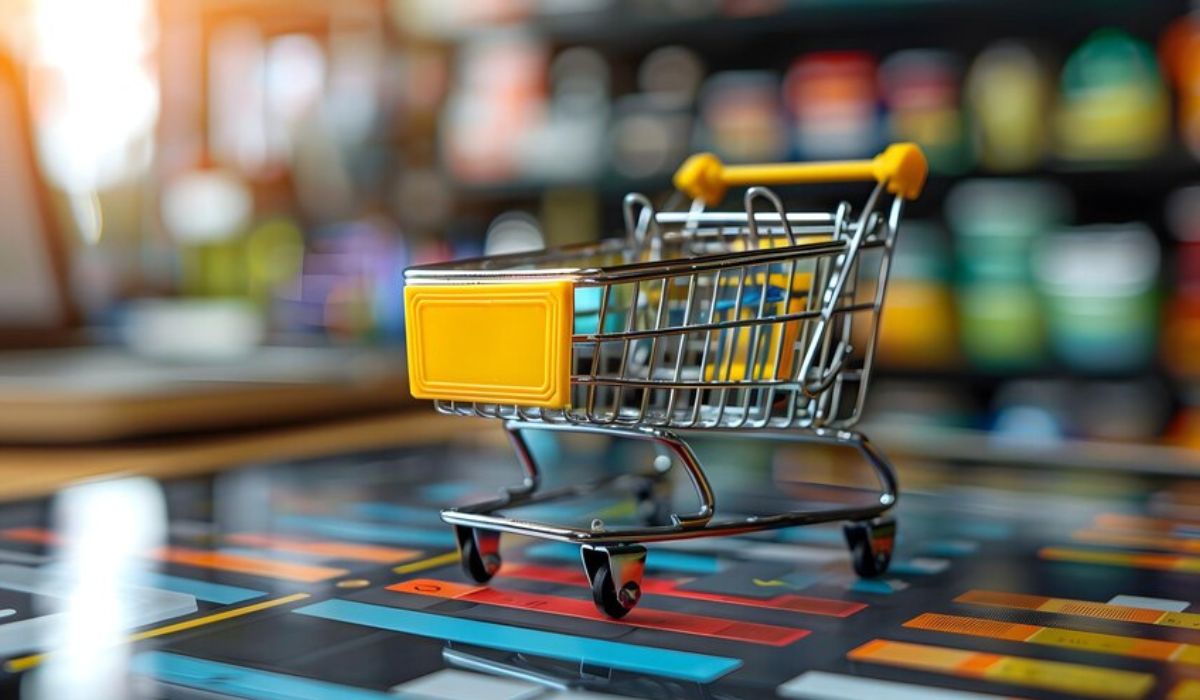Introduction to Digital Transformation in the Grocery Sector
The digital transformation in the grocery shopping sector represents a significant pivot point in consumer behavior and retail operations. Not too long ago, supermarkets were community mainstays where customers would spend considerable time selecting their goods – a ritual that fostered local economy connections. However, with the rapid evolution of digital capabilities, community-centered shopping is becoming more virtual. Today, with the advent of innovative supermarket loyalty programs, the definition of community extends to online forums and platforms where shopping feels personal and extensive, embracing convenience while maintaining connections.
This transformative period is marked by a staggering pace of change, with grocers integrating sophisticated technologies into their traditional models to keep up with the new digital dynamics. Among these are e-commerce websites that allow for grocery shopping from the comfort of home and apps that suggest recipes and automatically refill pantry staples. Although this shift is exciting, it requires all players in the industry to stay ahead and understand its impacts on different operational components, customer relations, and overall business strategies.
The Rise of Online Grocery Services
The ascension of online grocery services is an undeniable testament to technology’s influence on consumer convenience and business innovation. Compelled by the desire for promptness and ease, shoppers have welcomed digital avenues that simplify the acquisition of their daily necessities. Enhanced by smooth user interfaces and reliable delivery infrastructure, grocery applications and websites have made the food acquisition process virtually effortless. In sync with such burgeoning demand, online grocery platforms have expanded. Noteworthy industry analysis from sources elucidates a 40% surge in online grocery transactions, underscoring a changing industry and the adaptability of consumer behavior.
Retailers, therefore, face a new commercial reality wherein the swift augmentation of online services is a business imperative rather than a supplementary option. They must offer products digitally to remain relevant and attract a customer base that increasingly values the ability to shop from any location. As the physical and virtual realms converge, delivering a seamless and satisfactory online shopping experience is paramount for sustaining long-term customer relationships and loyalty.
Understanding Consumer Behavior in the Digital Age
With the transition to the digital platform, understanding the drivers behind consumer behavior has become more complex yet critical. Access to information, reviews, and price comparisons has empowered consumers to make educated and discerning choices. Their expectations revolve around the products they buy and the nature of their shopping experiences. They seek personalization, engagement, and transparency, all facilitated by the digital medium.
Technology’s ever-expanding influence permeates through the traditional patterns of consumption, compelling retailers to revisit their customer engagement strategies. In this process, the value of analytics cannot be overstated; interpreting consumer data effectively translates to tailored experiences and offerings, potentially cementing consumer loyalty. To remain competitive, retailers must recalibrate their methodologies to cater to a consumer base that expects a blend of quality, efficiency, and customization in their shopping journey.
The Advancements in Grocery Delivery and Pick-up Options
The grocery industry’s evolution continues with significant enhancements in delivery and pick-up services. Initially constrained to store-to-home deliveries, the spectrum of options now spans an array of innovative and flexible alternatives. Click-and-collect services, where customers shop online and pick up their items at a designated area, have mitigated the waiting period associated with home deliveries, satisfying the immediate needs of the modern shopper. It represents a streamlined and convenient option blending the boundaries of online and offline shopping realms.
This era of customizable delivery and pick-up choices has also seen a proliferation of subscription-based grocery services offering regular, hassle-free deliveries of household staples. The convenience of such services radiates appeal to a new generation of consumers who prioritize time management and efficiency. However, the success of these innovative models hinges on a complex network of logistical mastery and technological support systems—a testament to the intricate workings and planning required to meet and exceed consumer expectations.
Integrating Technology for Personalized Shopping Experiences
As grocers delve deeper into the digital shopping ecosystem, they tap into machine learning and data analytics capabilities to offer personalized services. Understanding individual buying patterns and preferences enables the creation of shopping experiences that resonate with customers on a personal level. Sophisticated algorithms track and analyze purchase history, facilitating personalized product recommendations that often lead to increased consumer satisfaction and retention.
Technology integration also extends to customer loyalty, with sophisticated platforms able to manage robust loyalty programs that reward shoppers for their repeated business and brand engagement. These initiatives encourage repeat purchases and foster a sense of community and belonging among customers—a sentiment once localized to physical store locales but now brilliantly adapted for the digital space.
Sustainability and the Digital Grocery Industry
In the dynamic interplay between technological advancements and online grocery shopping, sustainability has emerged as a focal point. Progressive online grocery businesses perceive environmental responsibility as a duty and a valuable differentiator in a competitive market. Efficiencies in inventory management utilizing predictive analytics have allowed businesses to significantly reduce food waste, a critical concern for retailers and environmentally-conscious consumers.
Moreover, the aggregation of delivery services reduces the carbon footprint as individual shopping trips decline in favor of centralized delivery systems optimized for fuel economy. As environmental impact becomes increasingly relevant to purchasing decisions, grocery services that demonstrate a commitment to eco-friendly practices will likely find favor with a growing customer base that aligns such values with their personal convictions and lifestyle choices.
How Retailers Can Adapt to the Digital Shift
Retailers navigating the shift toward digital grocery shopping encounter a landscape of constant adaptation. In this transition, traditional grocery retailers are compelled to adopt a progressive mindset, wielding technology to transform shopping into an experience that transcends the physical aisle. Enhancing digital capabilities such as eCommerce platforms, mobile applications, and customer relationship management systems is about keeping pace with contemporary trends and securing a position in the future of retail.
An omnichannel strategy seamlessly integrating different shopping experiences is crucial, allowing consumers to interact with the brand across multiple touchpoints. Through these consolidated efforts, retailers can offer value that resonates with a diverse consumer base, upholding tradition while embracing innovation.
Conclusion: Embracing Change for Growth and Success
The intersection of innovation, consumer expectations, and sustainability underscores the pivotal moment the grocery industry finds itself today. Retailers who navigate this transformation with agility and vision can harness the potential presented by the digital age. This shift, while challenging, is replete with opportunities for growth, customer engagement, and success.
The future of grocery shopping is an adaptive narrative written by retailers and consumers. As they collectively embrace this new digital paradigm, they pave the way for a shopping experience that is efficient, sustainable, and responsive to the evolving demands of society. It is a journey characterized by a blend of historical retail principles and pioneering digital trends that promises to redefine the grocery industry for generations to come.











